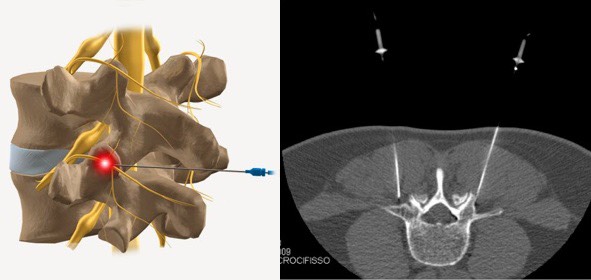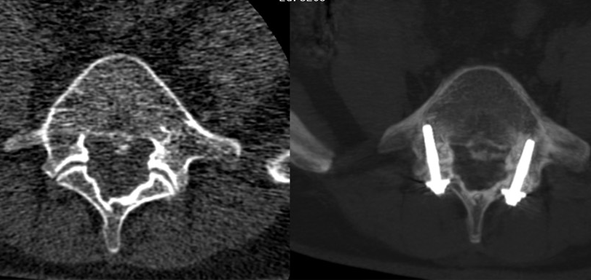

LUMBAR PAIN AND AXIAL MICROSTABILITY
Low back pain and low back pain (commonly called "sciatica") are not always due to the compression of the hernia on the nerve root: in fact it is often a simple inflammation of the joints of the vertebrae themselves. The Articular Faces constitute the points of contact between the posterior arches of the vertebrae, and partly compensate for the gravitational load on the vertebral column.
Inflamed "facet joint syndrome" can mimic the same symptoms as a herniated disc. The patient usually experiences lower back pain (lombaglia), more frequent on waking up in the morning, accompanied by lower back stiffness and, occasionally, irradiation to one or both lower limbs, mimicking a sciatica.
For this reason, careful examination, both clinical and neuroradiological, of this important area of the spine is essential. acute inflamed joint facet syndrome, i.e. lasting less than 3 months, is susceptible to infiltrative treatment with drugs (generally cortisone) or other anti-inflammatory agents (ozone) injected at the level of the same facets by means of a thin needle and CT guide.
In cases of intractable pain, unresponsive to drug therapy or lasting for more than 6 months, it is possible to destroy the small sensory nerves of the facets themselves (zigo-apophyseal nerves) by radio frequency or Denervation, a simple, rapid treatment (about 15 minutes). ) and painless, which in most cases determines the definitive disappearance of low back pain.


In cases of pain, however persistent even after denervation, it is possible to eliminate low back pain from instability of the articular facets by simply blocking their movement by inserting them - always in simple local anesthesia and with the TC method guided by two small transarticular micro-screws: in this way it prevents the joints cause pain due to their excessive movement, without altering the physiological flexibility of the patient's spine in any way.
No general anesthesia, no risk of deep scars, reduced surgery and hospitalization times.
learn more +